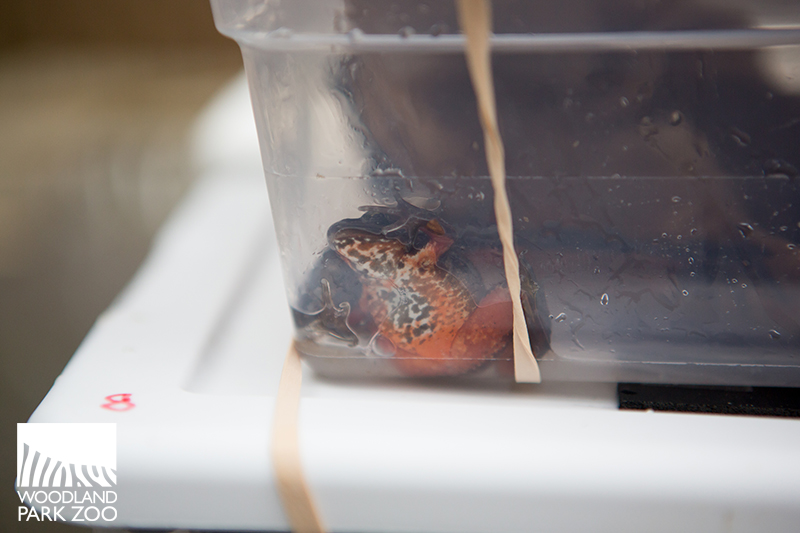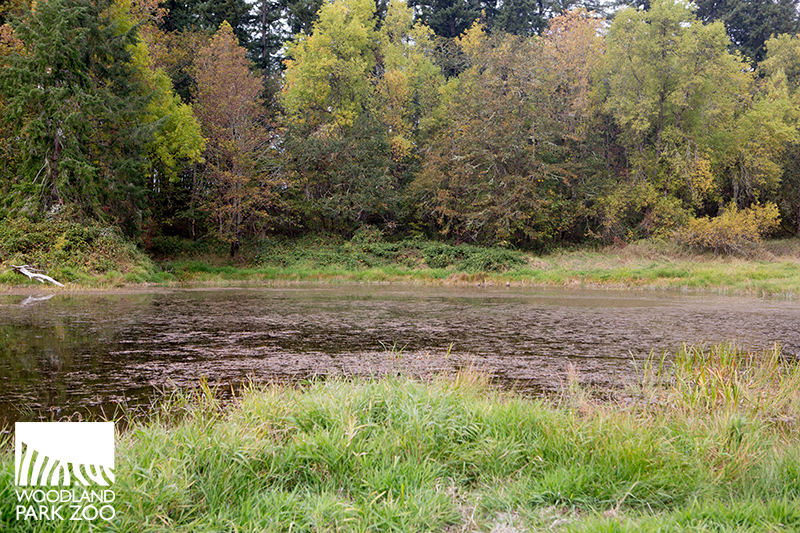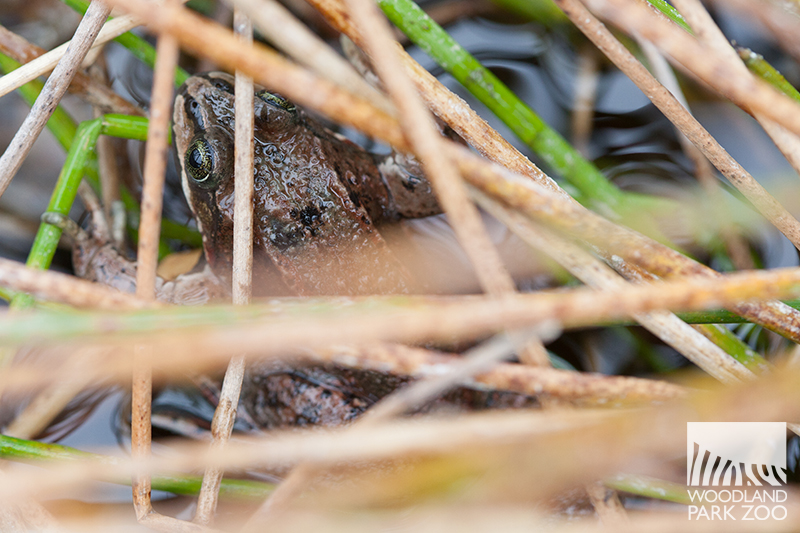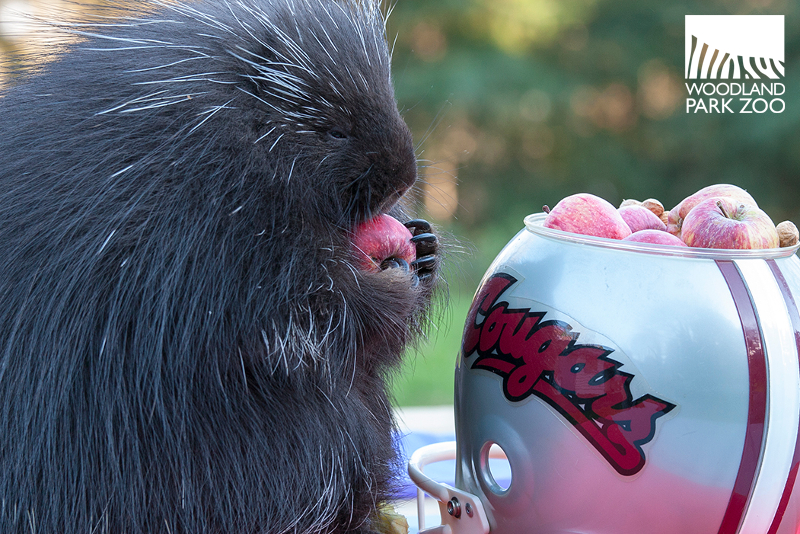Posted by: Rebecca Whitham, Editor
A spoonful of sugar was Mary Poppins’ trick, but it’s a plateful of bananas that makes the medicine go down for our Asian brown tortoise.
Just like you might put your pet’s pill inside a pocket of food, zookeepers find creative ways to get our 1,000+ animals to willingly take their medicine when needed. It’s not always an easy task!
Faced with the challenge of administering a liquid dose of parasite treatment to a tortoise, Day Exhibit keeper Alyssa Borek had an idea to get the animal’s cooperation. She cut up chunks of banana, hollowed out the insides, lined the chunks up on a little plate and poured the liquid medicine into the cores.
The results are messy. Yet effective.
Now that the medicine has been gobbled up, we’ve sent fecal samples off to the lab and we’ll get results soon to determine if the treatment is working.
It’s not uncommon for a tortoise to show parasites in its system, and this tortoise presented no symptoms. It was our preventative approach to health care at the zoo that first detected them. We all make our way to the doctor when we’re feeling ill, but a preventative approach means providing proactive health care before symptoms emerge.
Keepers are the first line of preventative care; their daily observations form the baseline of each individual animal’s health profile. Our expert veterinary crew then performs annual exams and regular testing to get ahead of any health concerns.
It was the yearly testing of each tortoise’s fecal samples that detected the parasites in the first place, and now that we are treating before any complications emerge, we are setting the tortoise up for a healthy life.
That way, its next banana treat will be just for fun.![]()
A spoonful of sugar was Mary Poppins’ trick, but it’s a plateful of bananas that makes the medicine go down for our Asian brown tortoise.
Watch: How does a tortoise take its medicine? Produced by Jeremy Dwyer-Lindgren with additional footage by Alyssa Borek.
Faced with the challenge of administering a liquid dose of parasite treatment to a tortoise, Day Exhibit keeper Alyssa Borek had an idea to get the animal’s cooperation. She cut up chunks of banana, hollowed out the insides, lined the chunks up on a little plate and poured the liquid medicine into the cores.
The results are messy. Yet effective.
Now that the medicine has been gobbled up, we’ve sent fecal samples off to the lab and we’ll get results soon to determine if the treatment is working.
It’s not uncommon for a tortoise to show parasites in its system, and this tortoise presented no symptoms. It was our preventative approach to health care at the zoo that first detected them. We all make our way to the doctor when we’re feeling ill, but a preventative approach means providing proactive health care before symptoms emerge.
Keepers are the first line of preventative care; their daily observations form the baseline of each individual animal’s health profile. Our expert veterinary crew then performs annual exams and regular testing to get ahead of any health concerns.
It was the yearly testing of each tortoise’s fecal samples that detected the parasites in the first place, and now that we are treating before any complications emerge, we are setting the tortoise up for a healthy life.
That way, its next banana treat will be just for fun.










































































































